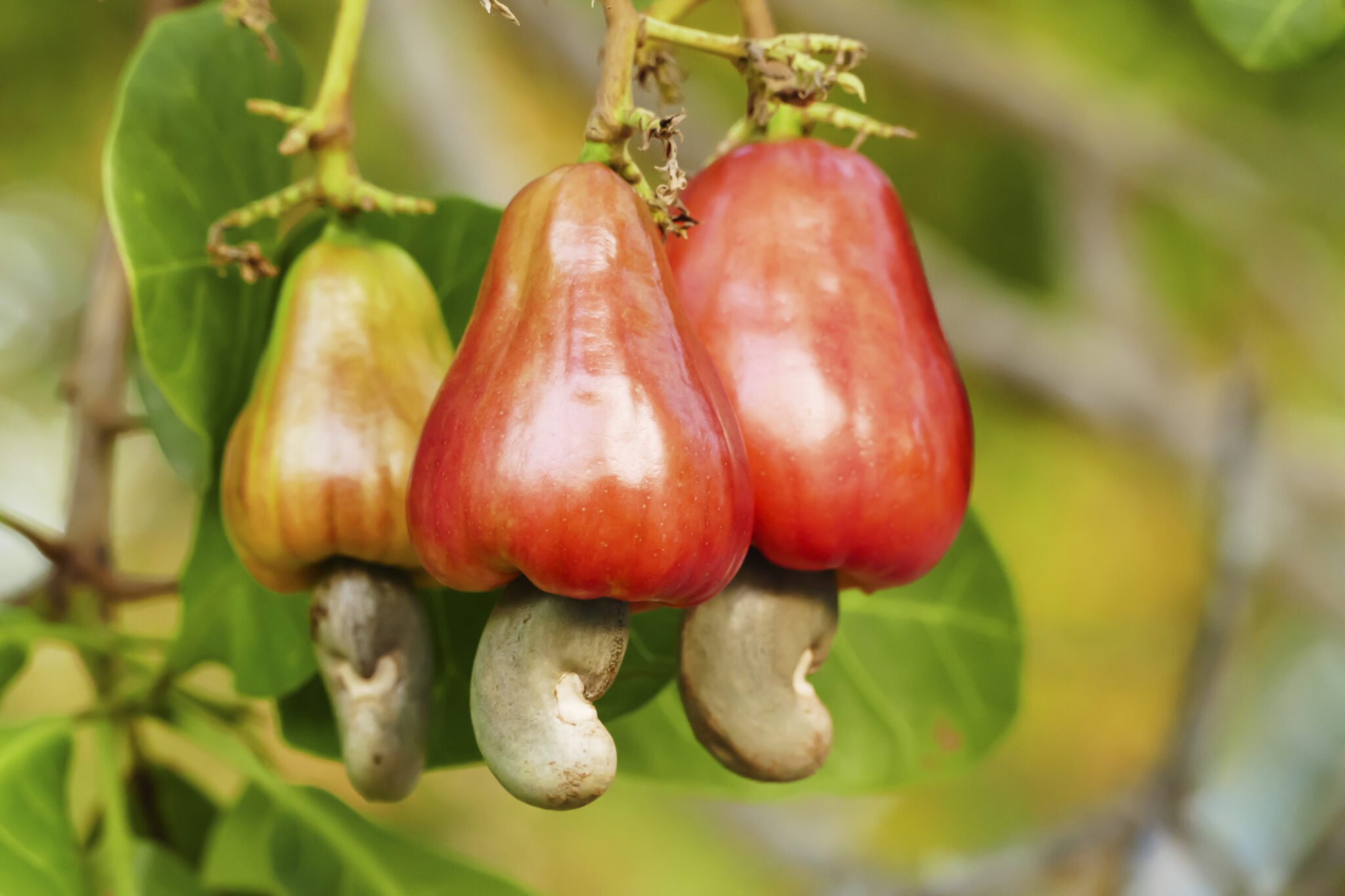When we think of cashews, what immediately comes to mind are those creamy, crescent-shaped nuts often found in mixed nuts assortments or as a crunchy addition to various dishes. However, what many people may not realize is that the cashew nut is just one part of a larger, more fascinating fruit—the cashew apple. In this blog post, we’ll delve into the lesser-known aspects of the cashew fruit, exploring its origin, nutritional value, culinary uses, and its significance beyond just being the source of the popular cashew nut.
Origins and Growth:
The cashew tree (Anacardium occidentale) is native to northeastern Brazil but is now cultivated in various tropical regions worldwide, including parts of Asia and Africa. The tree is highly adaptable to different environmental conditions, thriving in warm, humid climates with well-drained soil.
The cashew fruit itself is a drupe, a type of fruit characterized by a fleshy outer layer surrounding a hard shell containing the seed (in this case, the cashew nut). The cashew apple, as it’s commonly known, grows at the end of the cashew nut and has a distinctive pear or bell shape, depending on the variety. Its color ranges from yellow to red when ripe, and it typically measures about 5–10 centimeters in length.
Nutritional Value:
While the cashew nut steals the spotlight in terms of nutrition, the cashew apple also boasts several health benefits. It is low in fat and rich in vitamins, particularly vitamin C, which plays a crucial role in boosting the immune system and promoting skin health. Additionally, cashew apples contain minerals such as potassium and magnesium, essential for maintaining proper bodily functions.
One noteworthy aspect of the cashew fruit is its high vitamin C content, which surpasses that of many citrus fruits. This makes it a valuable addition to diets, especially in regions where citrus fruits are not as readily available.
Culinary Uses:
In regions where cashew trees are prevalent, the cashew apple holds significant cultural and culinary importance. Despite its delicate skin and perishable nature, the fruit is consumed in various forms, both fresh and processed.
One popular method of enjoying cashew apples is by consuming them fresh, either on their own or in fruit salads. The flavor profile of the cashew apple is often described as a blend of sweet and tangy, with a subtle hint of astringency. Some liken it to a combination of mango, pear, and citrus flavors.
In addition to being eaten fresh, cashew apples are also used to make a variety of beverages, including juices, smoothies, and even wines. The juice extracted from the fruit can be enjoyed as a refreshing beverage on its own or combined with other fruits for added flavor complexity.
Beyond beverages, cashew apples are also utilized in culinary applications such as jams, chutneys, and preserves. Their naturally high pectin content makes them well-suited for jelly-making, while their unique flavor adds depth to savory dishes when used in chutneys and sauces.

Economic and Environmental Impact:
From an economic perspective, the cashew fruit plays a significant role in many tropical economies. While the cashew nut remains the primary commercial product, the cashew apple also contributes to the overall profitability of cashew cultivation. In some regions, farmers have found innovative ways to utilize the entire cashew fruit, minimizing waste and maximizing revenue.
Furthermore, the cultivation of cashew trees can have positive environmental impacts. Cashew trees are known for their ability to thrive in semi-arid regions with poor soil quality, making them a valuable asset in combating desertification and soil erosion. Additionally, cashew orchards provide habitat and food sources for various wildlife species, contributing to biodiversity conservation efforts.
Cultural Significance:
In addition to its economic and environmental importance, the cashew fruit holds cultural significance in many regions where it is grown. In some cultures, the cashew tree is revered for its resilience and ability to thrive in challenging conditions, symbolizing strength and endurance.
Moreover, the consumption of cashew apples is often associated with traditional festivals and celebrations. In Brazil, for example, cashew fruit is a staple during the annual cashew festival, where locals gather to enjoy the fruit in various culinary preparations while celebrating their cultural heritage.
Conclusion:
The cashew fruit is much more than just a vessel for the beloved cashew nut. From its origins in tropical regions to its diverse culinary applications and nutritional benefits, the cashew apple deserves recognition for its unique qualities and contributions. As consumers become more aware of the versatility and value of the cashew fruit, it is likely to gain even greater popularity and appreciation in the culinary world. So, the next time you bite into a cashew nut, take a moment to appreciate the fruit from which it came a humble yet extraordinary drupe that deserves its moment in the spotlight.
Ajigofarms is a reliable global agricultural purchase sourcing with profound expertise in the manufacturing, and exportation of food crops. We are tested, and trusted suppliers of all kinds of cash crops and food crops. Our constant supply chain solution makes exporting easy, quick, and safe, we are identified with timeliness and meeting up with deadlines. Regardless of the region you are located in worldwide, you can reliably order your Agric products and be rest assured of successful delivery.




